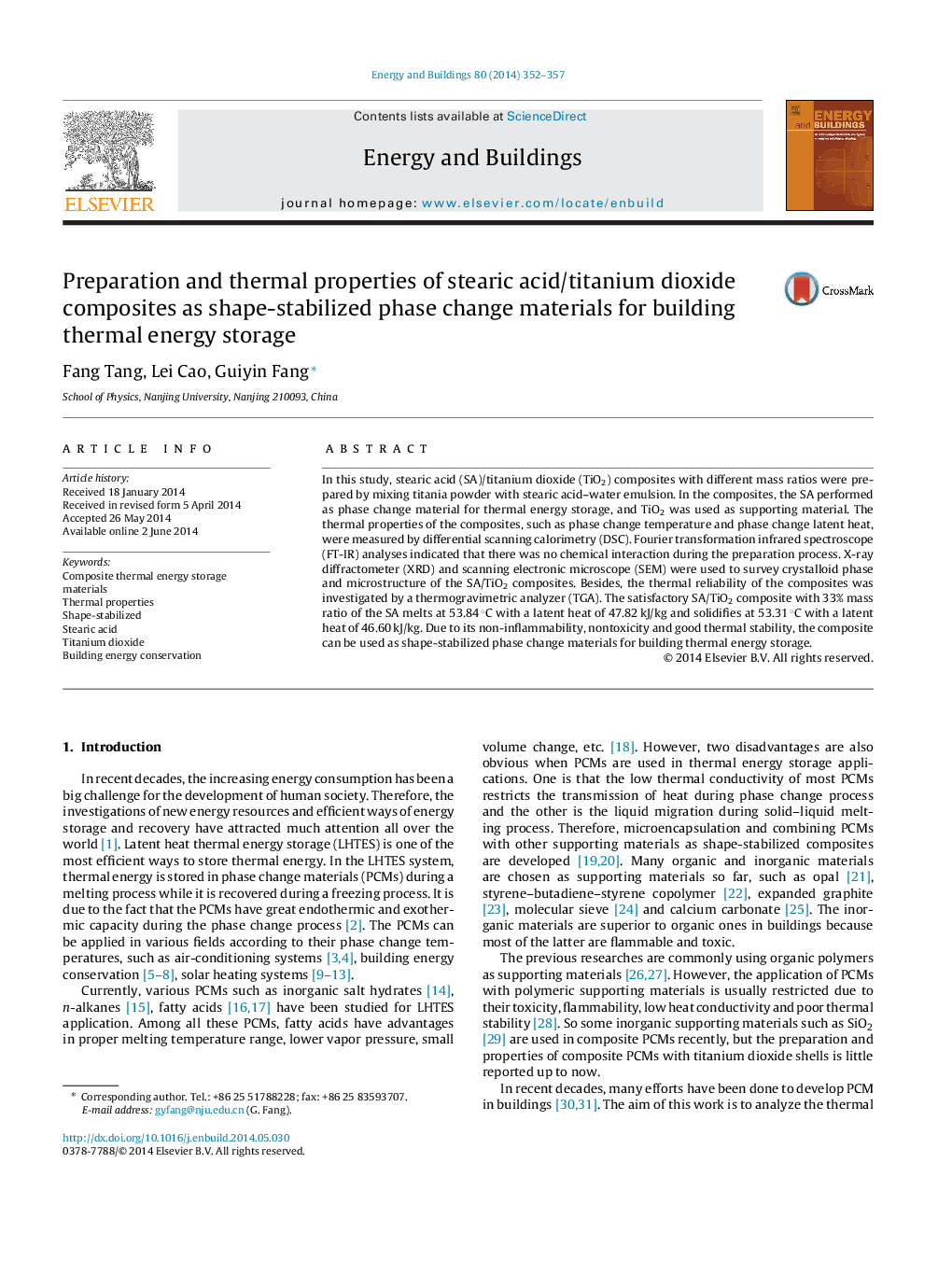| Article ID | Journal | Published Year | Pages | File Type |
|---|---|---|---|---|
| 262780 | Energy and Buildings | 2014 | 6 Pages |
•The stearic acid/TiO2 composites with different mass ratios were prepared.•Chemical structure, crystalloid phase and microstructure of the CPCMs were analyzed.•Thermal properties and stability of the CPCMs were investigated.•The TiO2 can improve thermal stability of the CPCMs.
In this study, stearic acid (SA)/titanium dioxide (TiO2) composites with different mass ratios were prepared by mixing titania powder with stearic acid–water emulsion. In the composites, the SA performed as phase change material for thermal energy storage, and TiO2 was used as supporting material. The thermal properties of the composites, such as phase change temperature and phase change latent heat, were measured by differential scanning calorimetry (DSC). Fourier transformation infrared spectroscope (FT-IR) analyses indicated that there was no chemical interaction during the preparation process. X-ray diffractometer (XRD) and scanning electronic microscope (SEM) were used to survey crystalloid phase and microstructure of the SA/TiO2 composites. Besides, the thermal reliability of the composites was investigated by a thermogravimetric analyzer (TGA). The satisfactory SA/TiO2 composite with 33% mass ratio of the SA melts at 53.84 °C with a latent heat of 47.82 kJ/kg and solidifies at 53.31 °C with a latent heat of 46.60 kJ/kg. Due to its non-inflammability, nontoxicity and good thermal stability, the composite can be used as shape-stabilized phase change materials for building thermal energy storage.
